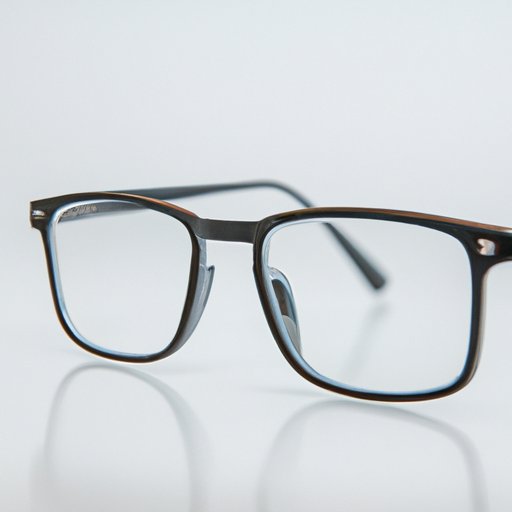
Introduction
Your eyes are your window to the world. Ensuring that you have the right prescription for your eyeglasses is essential to your vision and overall well-being. Understanding your eyeglass prescription can be confusing, but with a little guidance, you can easily decipher it. In this article, we’ll provide you with a step-by-step guide to reading your eyeglass prescription and offer tips on how to choose the best frames for your prescription. We’ll also cover common mistakes to avoid and how to navigate insurance coverage. By the end of this article, you’ll be equipped with the knowledge you need to make informed decisions concerning your vision.
A Step-by-Step Guide
Eyeglass prescriptions consist of several elements, each with its own meaning. The first is the sphere, which measures the amount of nearsightedness or farsightedness in your vision. If there is no number recorded under the sphere column, you have perfect 20/20 vision. The further away from zero the sphere number is, the more corrective lenses you’ll need.
The cylinder measures the amount of astigmatism you have, which is an irregular curvature of the cornea causing blurred vision. Astigmatism is expressed as either a positive or negative number, indicating the direction in which the lens needs to be oriented to correct it.
The axis number is recorded as a degree number between 0 and 180 and tells the lens maker where to position the cylinder on the lens for optimal correction.
Finally, the pupillary distance (PD) is recorded, which is the distance between the pupils of your eyes. This measurement is essential for properly aligning the lenses on the frame.
Common Mistakes to Avoid
One of the most common mistakes people make when reading their eyeglass prescription is mistaking the sphere number for the total correction needed. However, the sphere only accounts for nearsightedness or farsightedness and doesn’t include astigmatism. It’s important to ensure that all elements of your prescription are taken into account when ordering eyewear.
Another common mistake is assuming that the same prescription will work for both eyes. However, each eye’s prescription may be slightly different and should be taken into account when selecting and ordering eyewear.
How to Choose the Right Frames
Different prescriptions impact frame choice. Thicker lenses may limit the number of frame styles that will work. If you have a strong prescription, you may want to consider a lightweight lens material such as polycarbonate or Trivex. Additionally, the appropriate frame style is crucial for comfort and functionality. For instance, high prescriptions may require smaller frames to minimize lens thickness and weight, while lower prescriptions may allow for more flexibility. A skilled eye professional can help find the perfect frames for your prescription.
Navigating Insurance Coverage
Your eyeglass prescription can impact your insurance coverage. Typically, insurance will cover a basic frame and single-vision lenses; however, premiums may be required for more advanced lenses, coating options, and frame types. Patients with specific vision needs, such as those who have undergone cataract surgery, may require medically necessary eyewear, which can be covered under insurance.
To navigate insurance, it’s essential to become familiar with the specifics of your plan and what is and isn’t covered. You can also work with an eye professional and your insurance provider to find the best options for your individual needs.
Understanding Ophthalmic Terminology
Ophthalmic terminology can be complex and challenging to understand. Diopters, for instance, refers to the unit of measurement for the correction of refractive errors. It represents the amount of refractive error corrected by a lens. Axial length, on the other hand, is the distance between the front and back of the eye, affecting the amount of correction needed.
By understanding these technical terms, you can gain a better understanding of your vision and how to maintain optimal visual health.
Conclusion
Understanding your eyeglass prescription and how to read it is essential for maintaining healthy eyesight. By following the steps outlined in this article, you can easily decipher your prescription and make informed decisions about your vision needs, including selecting the right frames and navigating your insurance coverage. Remember to work with your eye professional and take your specific needs into account.




